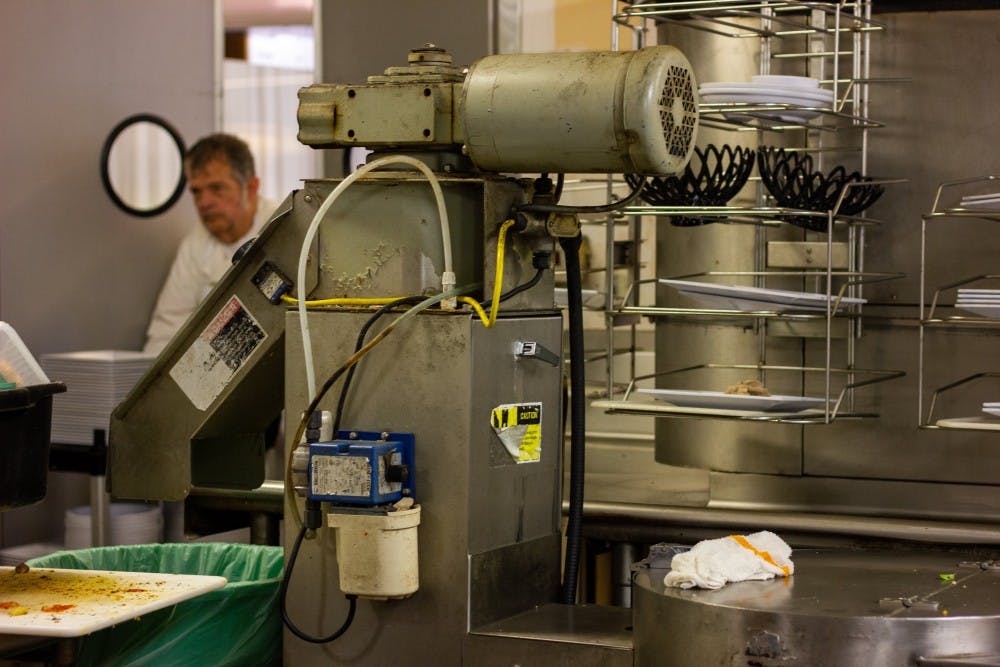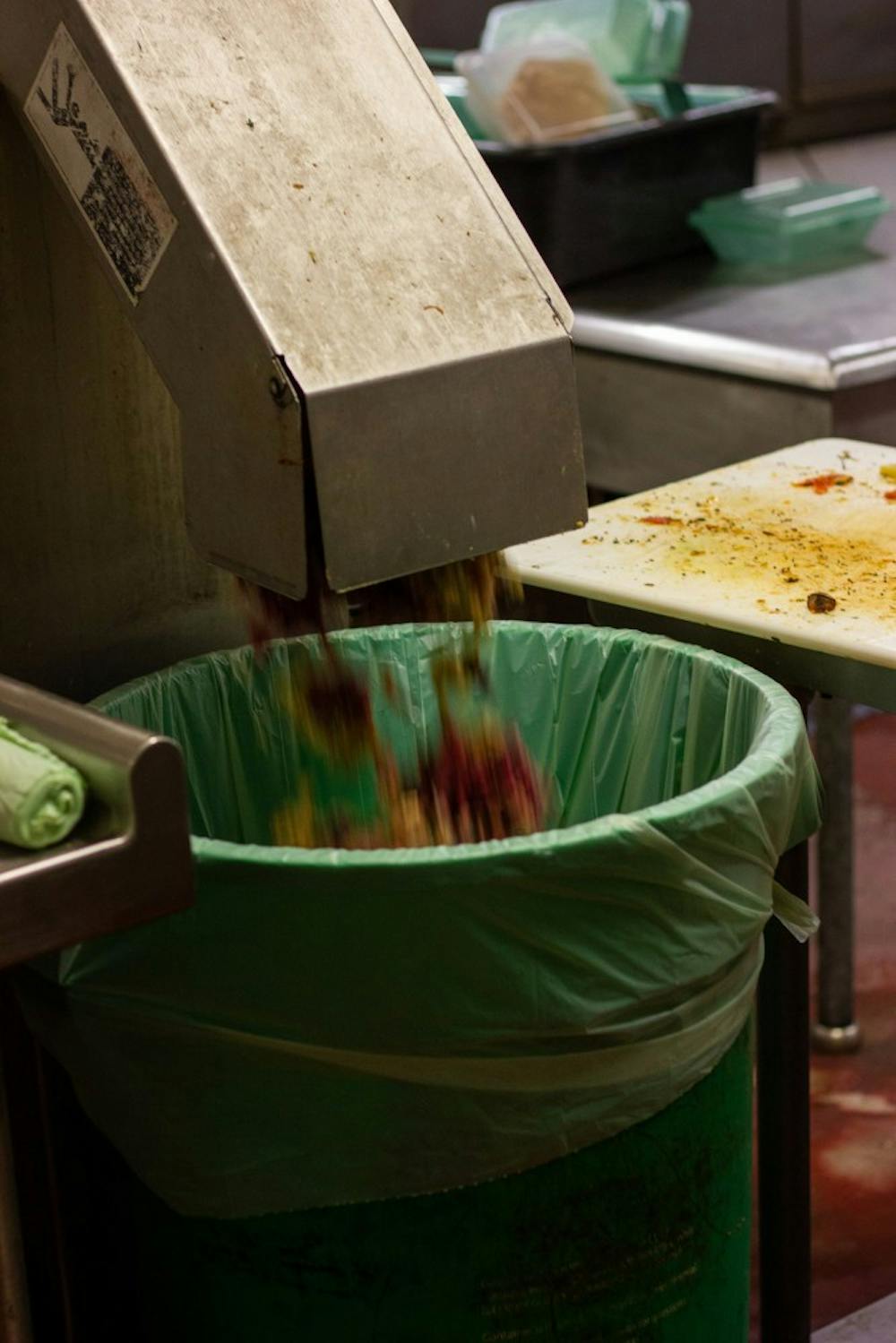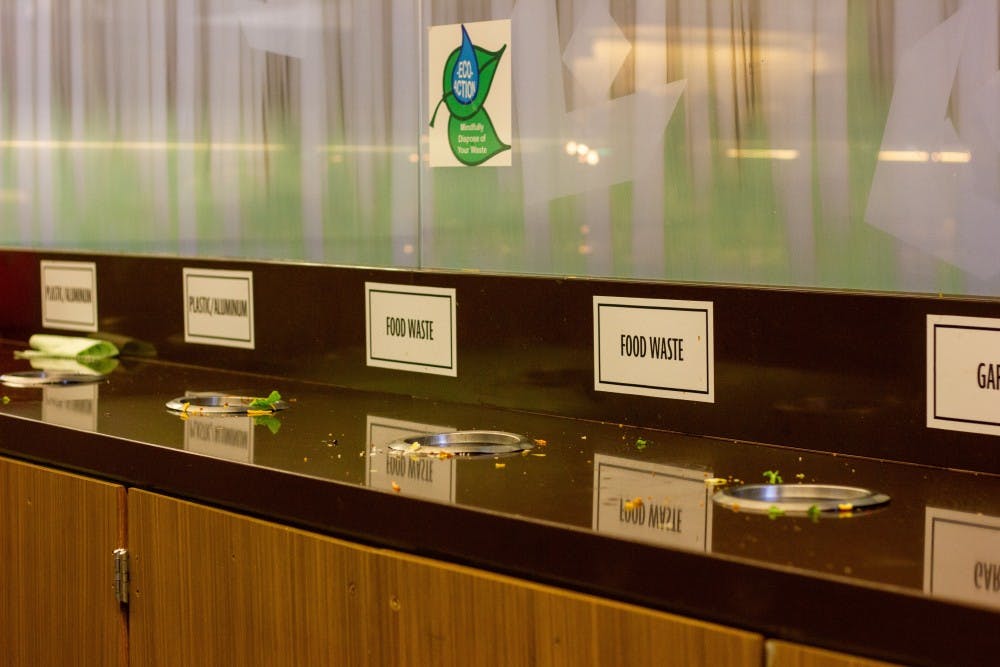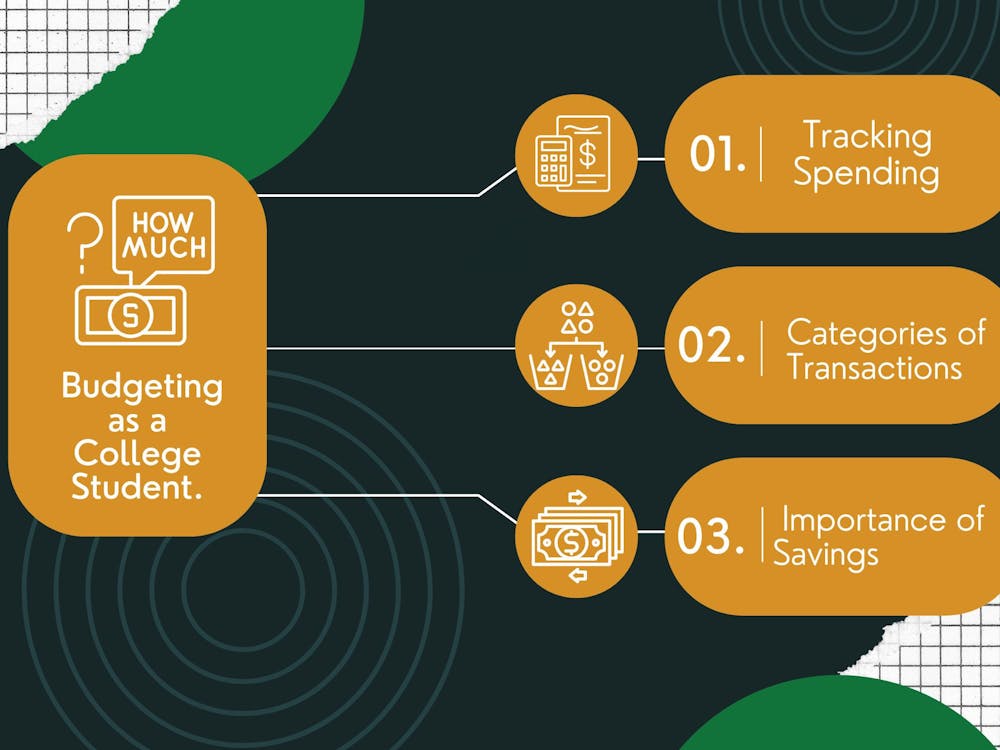There’s one last bite left of your taco bowl from The Commons, but you’re too full to eat any more. The only option is throw it into the “food waste” bin. This is only the beginning of your half-eaten taco’s journey. It has a long way to go.
Most students don't think twice when they toss their dinner into the trash bin. But have you ever wondered where your food actually goes? The waste from those compost bins in The Commons first gets put into a “food pulper,” located in the dish pit where all of the dishes get cleaned.
“It grinds the food up, it expresses the water out and then it pumps all of the biodegradable product into cans and goes straight out to the composting bins,” said Kirk Mustain, the general manager for Bon Appetit.

The food pulper is a big machine connected to the dish pit, where left over food is ground up and placed into compost bins.
By the time the last few bites of your taco bowl leaves The Commons, it has completely lost its form, and now it’s just a part of the food compost pile.
Waste Management picks up that pile every day and brings it to Oregon Metro’s central transfer station in Northwest Portland, according to Dean Kampfer, the marketing manager for Waste Management in the Pacific Northwest. Every day, they pick up 600 to 700 pounds of food waste between the Pilot House, the Anchor and The Commons, Mustain said.
You might think that when you compost your half-eaten taco bowl, it gets decomposed into soil. But this is not the case for UP’s compost and many other large organizations like UP. Compost from large organizations and institutions is sent to anaerobic digestion facilities, where food is broken down to create methane. Methane is used as an energy source for things like cars and electricity. It can also be used in plant fertilizer.

The food pulper at work.
According to Oregon Metro, the organic waste that they receive from all over Portland gets sent to three different facilities in Corvallis, Salem and Junction City. JC Biomethane Junction City, which is now owned by Shell New Energies, is the main anaerobic digestion facility serving Oregon.
Cars, trucks, planes and homes are not the only places that UP Bon Appetit food ends up. At the end of the day, there is extra uneaten food that’s still edible. Bon Appetit makes a large effort to not waste any edible food. According to Mustain, the school is Food Recovery Verified, which is a way for the Food Recovery Network to reward businesses that saves excess food. This allows UP Bon Appetit to donate the food to food banks and other food rescue companies.
Urban Gleaners is one of the organizations that the university gives its leftover food to. Their mission is to feed low-income kids and families in the Portland metro area. The company drives to UP and other restaurants and businesses across Portland, picks up the food, packages it in their warehouse and then distributes it to their 60 regular clients, which includes schools and community centers.
“Last year we rescued over a million pounds of food,” Urban Gleaners Program Director Kerri Cacciata said. “We have a pretty small staff. There’s 12 employees. We really rely on volunteer work.”
Urban Gleaners picks up food from UP twice a week, and each time they come, they retrieve 1,500 to 1,800 pounds of uneaten food, Mustain said.
“We have a pretty robust program,” Mustain said. “I think we’re doing a pretty good job. But there’s always room for improvement.”
So, next time you dump your half-eaten taco bowl or pizza into the compost bin at the compost at The Commons, it still has a long way to go. It might even end up at your house.
Fiona O'Brien is a reporter for The Beacon. She can be reached at obreinf21@up.edu.








